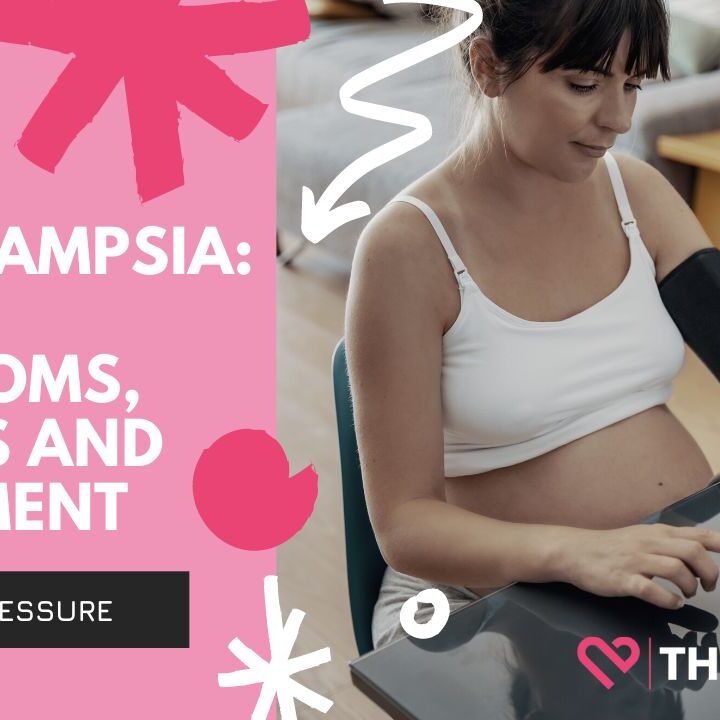Mild pre-eclampsia is a pregnancy complication characterized by high blood pressure (hypertension) and protein in the urine (proteinuria) after 20 weeks of gestation. While it is considered a less severe form of pre-eclampsia, early detection and proper management are essential to prevent complications for both the mother and baby.

Causes and Risk Factors
The exact cause of pre-eclampsia remains unknown, but it is believed to stem from improper placental development and insufficient blood flow to the placenta. Several risk factors increase the likelihood of developing mild pre-eclampsia, including:
- First-time pregnancy
- Family history of pre-eclampsia
- Multiple pregnancies (twins, triplets, etc.)
- Pre-existing hypertension
- Obesity or excessive weight gain during pregnancy
- Diabetes or kidney disease
- Advanced maternal age (above 35 years)
Symptoms of Mild Pre-eclampsia
Mild pre-eclampsia often presents with subtle symptoms, making regular prenatal checkups crucial. Common signs include:
- Blood pressure higher than 140/90 mmHg on two separate readings
- Proteinuria (protein in urine detected through urine tests)
- Swelling (edema) in the hands, face, and feet
- Mild headaches
- Weight gain due to fluid retention
Severe symptoms such as persistent headaches, vision changes, and abdominal pain indicate worsening pre-eclampsia and require immediate medical attention.
Diagnosis and Monitoring
Diagnosing mild pre-eclampsia involves routine prenatal screenings, including:
- Blood pressure measurements
- Urine tests to detect protein levels
- Blood tests to assess liver and kidney function
- Ultrasound to monitor fetal growth
- Doppler studies to evaluate placental blood flow
Regular monitoring helps ensure that the condition does not progress into severe pre-eclampsia or eclampsia, which can be life-threatening.
Management and Treatment Options
Managing mild pre-eclampsia focuses on preventing complications and ensuring a safe delivery. Common strategies include:
Lifestyle and Home Management
- Frequent prenatal visits to monitor blood pressure and fetal health
- Reducing salt intake to minimize fluid retention
- Staying hydrated to support circulation and kidney function
- Resting on the left side to improve blood flow to the placenta
- Monitoring fetal movements to ensure proper development
Medical Interventions
- Antihypertensive medications may be prescribed if blood pressure rises significantly.
- Corticosteroids can be given to enhance fetal lung maturity in case early delivery becomes necessary.
- Hospital monitoring is required if the condition worsens.
Delivery Planning
Mild pre-eclampsia is typically managed until the pregnancy reaches 37 weeks, at which point induction of labor may be recommended. If complications arise, early delivery may be necessary.
Potential Complications
While mild pre-eclampsia is generally manageable, it can escalate into severe pre-eclampsia, leading to:
- Preterm birth due to early delivery
- Placental abruption (premature separation of the placenta)
- HELLP syndrome (Hemolysis, Elevated Liver enzymes, and Low Platelets)
- Eclampsia (seizures during pregnancy)
Early detection and consistent monitoring are key to preventing these complications.
Prevention Strategies
Although pre-eclampsia cannot always be prevented, certain measures can lower the risk:
- Maintaining a healthy weight before and during pregnancy
- Regular prenatal checkups to detect early signs
- Managing pre-existing conditions like diabetes or hypertension
- Taking prenatal vitamins, including folic acid
- Engaging in moderate exercise to promote healthy circulation
Mild pre-eclampsia is a manageable condition with timely intervention and proper prenatal care. Expecting mothers should remain vigilant about their health, attend all prenatal appointments, and follow their healthcare provider’s recommendations. By staying informed and proactive, the risks associated with pre-eclampsia can be minimized, ensuring a safe pregnancy and delivery.

